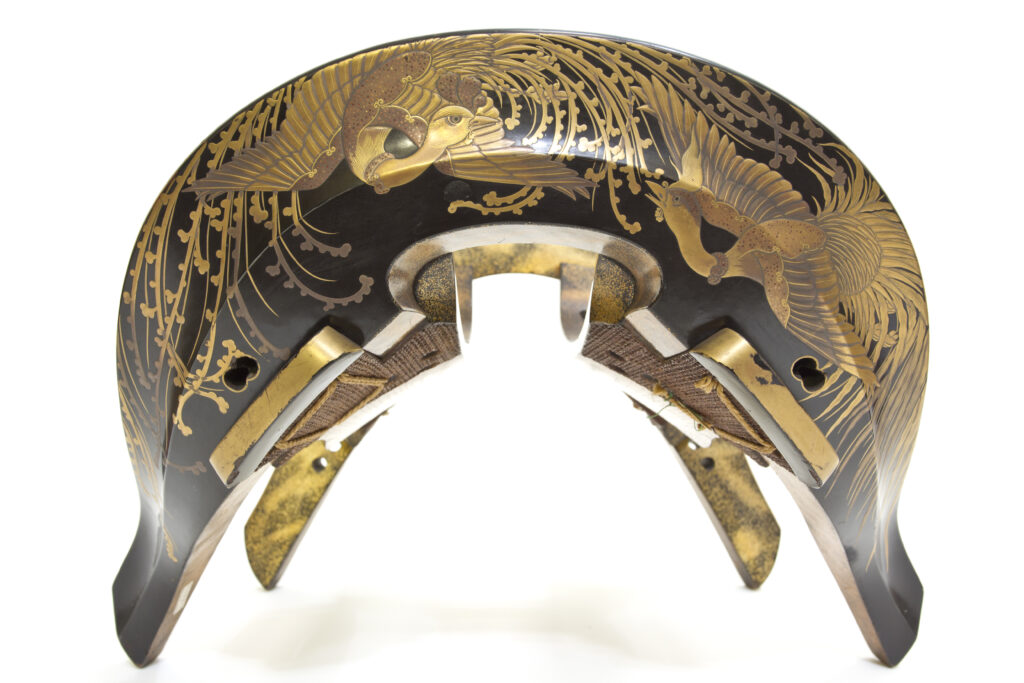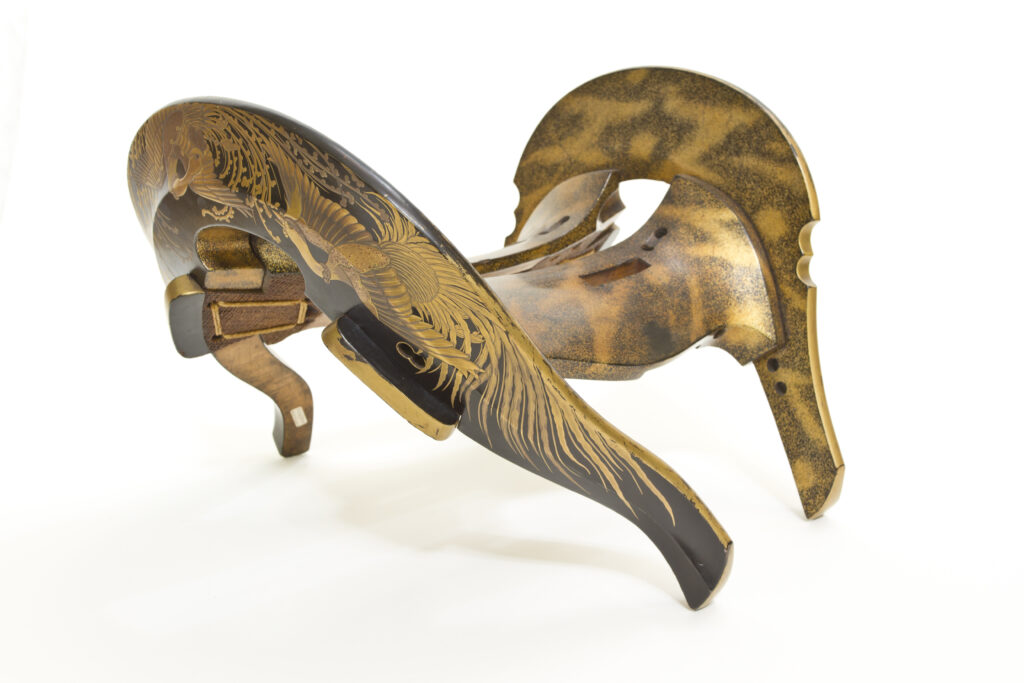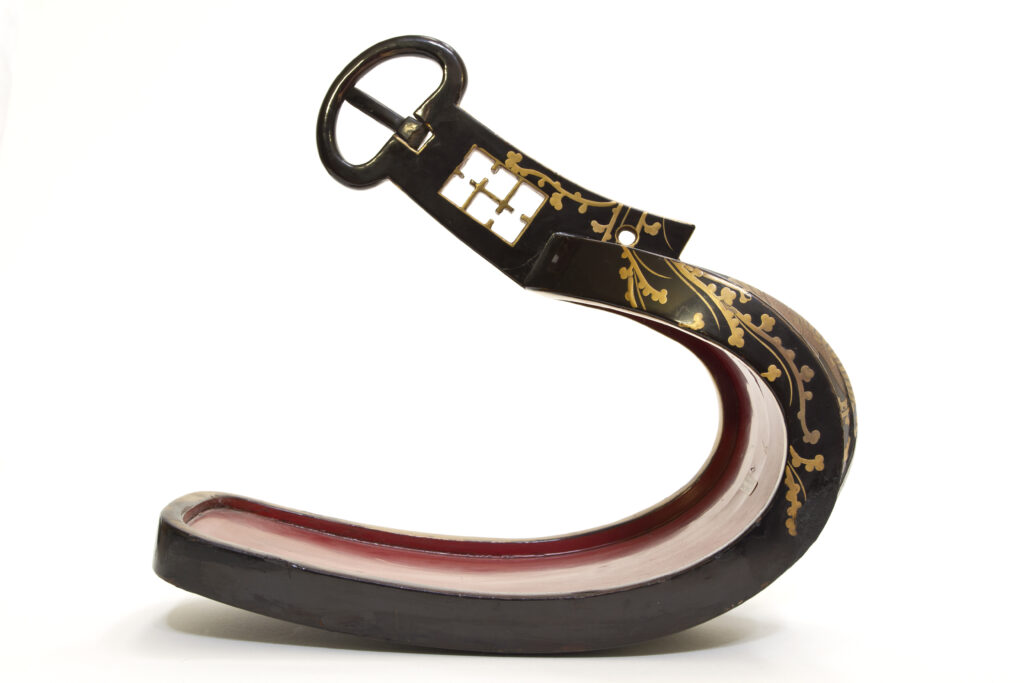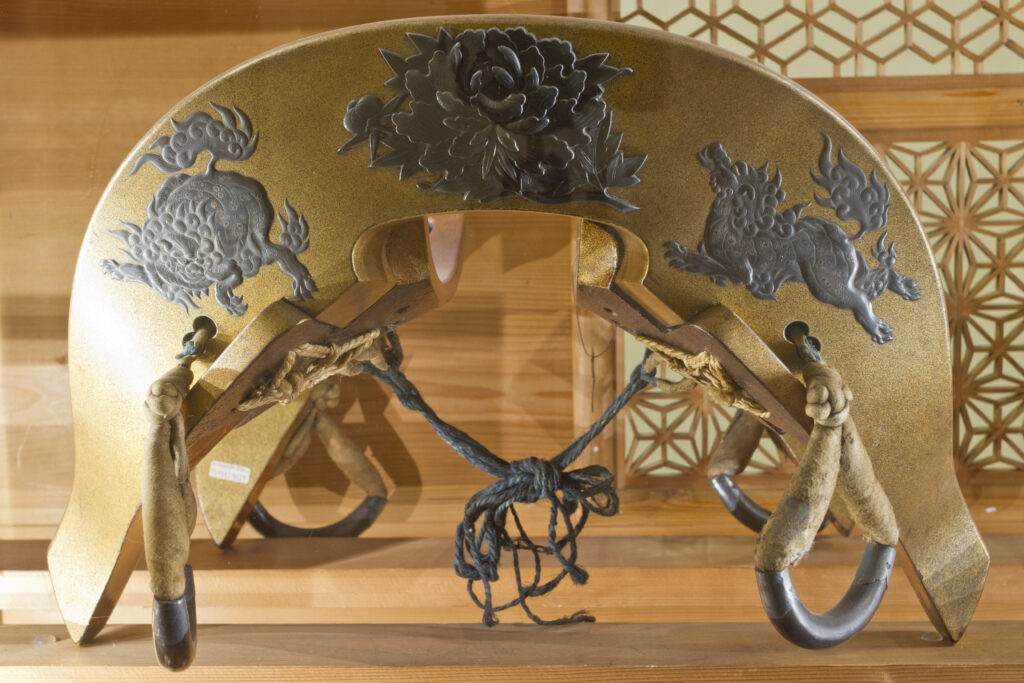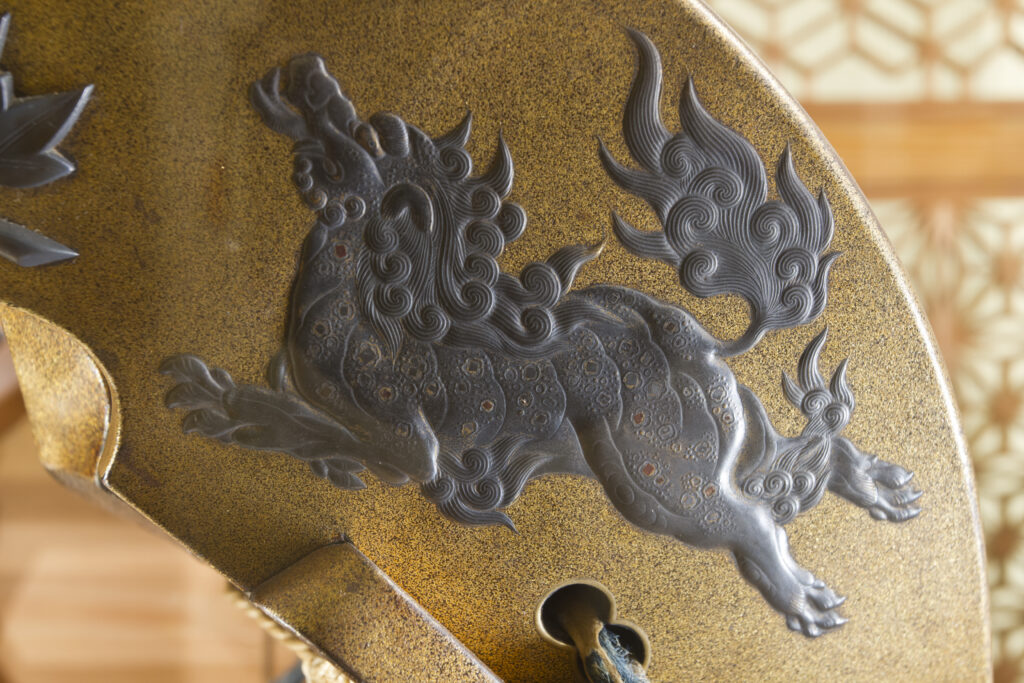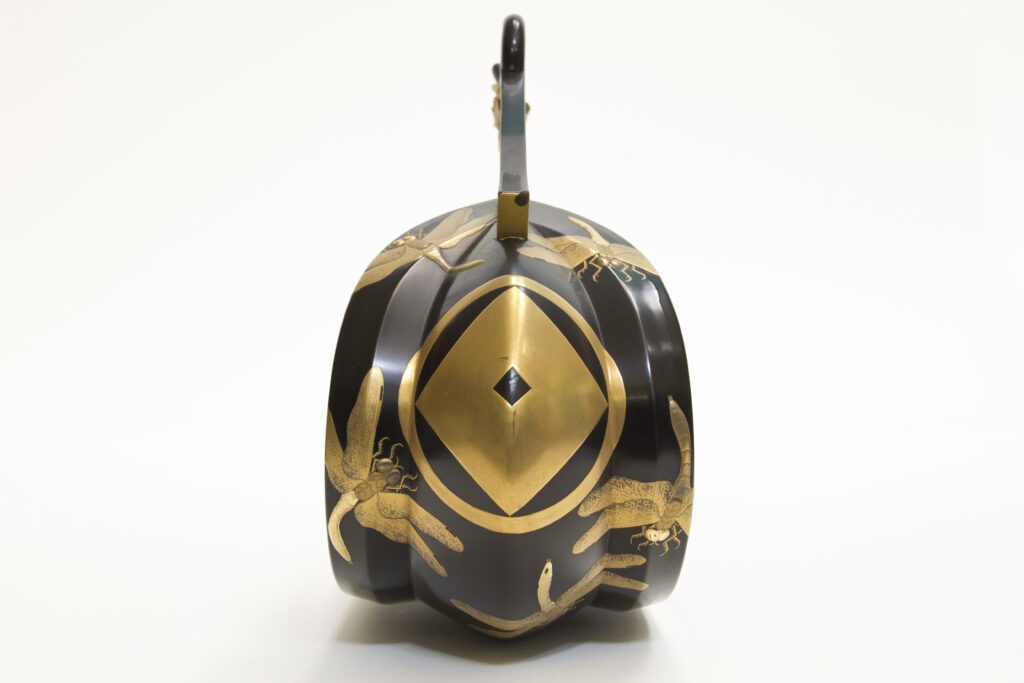ROOM 2
This room of the Museum has remained nearly unchanged since 1928.
It houses refined examples of saddles and stirrups from the Edo period (1603-1868). High-ranking samurai mounted on horseback using saddles (kura) and stirrups (abumi) in lacquered wood, often decorated with family crest and auspicious motifs. Kurabane saddles were composed by four parts connected to each other by cords that made them flexible. The stirrups, with a wide and flat bottom, guaranteed the stability necessary to use bow and arrows, the most effective offensive weapons at a distance, until the introduction of firearms. During the Edo period horsemen were no more the main military force of the Japanese army: samurai on horseback attended ceremonial parades in the presence of lords and shōgun. The Meiji (1868-1912) doll, displayed above the door, shows how horse harness were mounted included those in silk and lacquered leather in showcase 4. In showcases 2, 3, 5 and 6 are displayed swords of daishō, the set of two swords, katana (long swords) and wakizashi (short swords) carried by samurai.
